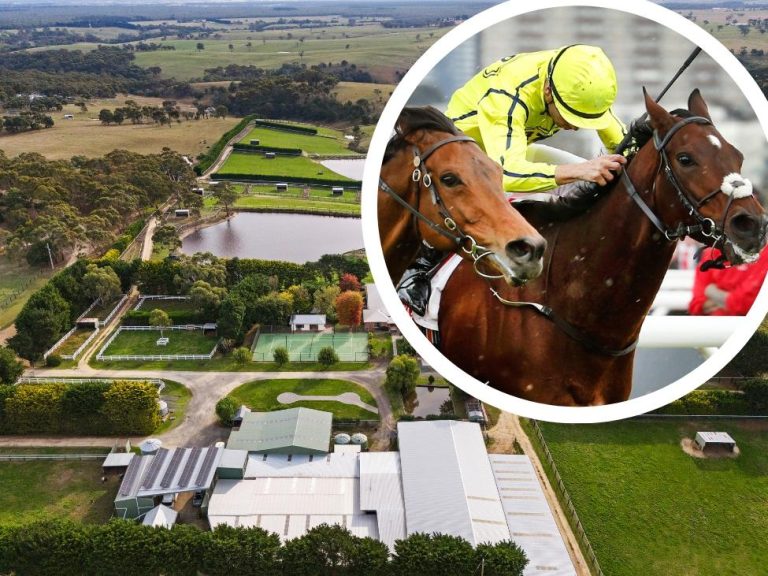Regulators eye lenders as property market simmers

All capital cities bar Perth are at record highs in a housing market driven by low rates, tighter supply and increased demand.
The roaring housing market is in the sights of regulators and big developers and small property investors may be in the firing line if they move to slow the boom.
Nerves are rising about the prospect of an intervention as regulators‘ hands could be tipped by the return of investors to the residential property market and new entrants taking on more debt.
Banks have recognised that Sydney is the hottest city with the NAB lifting its growth forecast for the city’s home prices to 21 per cent for this year, implying a surge before year end.
The spillover of any actions could slam into large listed and private property developers that have successfully ridden the housing boom (so far) and the banks that have fuelled an explosion in debt.
Big property developers Stockland and Mirvac say they are focused on owner occupiers but the spectre of macroprudential measures being implemented looms over the shares exposed to housing as well as the physical market.
A heady cocktail of low interest rates, tighter supply of stock and increased demand for homes has largely driven the booming marketplace, with prices already rising 13.5 per cent nationally since this time last year.
The regulators are yet to show their hand. But the Reserve Bank of Australia and the Australian Prudential Regulation Authority have twice stepped in to regulate the housing market in the past – once in 2014 and again in 2018 towards the end of the last boom.
Each body has reiterated their mandates do not require them to regulate the movement of housing prices, however they take an eagle-eye approach in monitoring riskier lending practices
Economists have been cautious about what to expect moving forward, agreeing any changes are likely to occur further down the line.
REA Group executive manager economic research Cameron Kusher said he believed that if the market could not sort itself out in the next year, intervention might take place.
“I think regulators will probably be more inclined to do something next year,” he said. “Because by then it will have been around 18, 24 months of big price growth and then it might be time to step in and do something.”
“I’d like to think the heat would be out of the market enough that they’re not required, but equally, even though the RBA and APRA are at pains to say that they don’t target house prices, I feel that there’s a lot of pressure there,” he said.
The housing turnaround following the initial pandemic lockdowns in autumn last year was unexpected yet tremendous. After recording the fastest monthly rise in prices in 32 years through March, all capital cities bar Perth are at record highs.
AMP chief economist Shane Oliver said he expected the market to rise 15 to 20 per cent this year before slowing to about 5 per cent, flagging possible market intervention.
“Expect a progressive slowing in the pace of gains as poor affordability impacts, government homebuyer incentives are cut back, fixed mortgage rates rise, macro prudential tightening kicks in and immigration remains down relative to normal,” he said.
While the market has been ticking along, CoreLogic’s Asia Pacific research director Tim Lawless said several trends were emerging in the marketplace that he believed regulators would be monitoring moving forward.

The Reserve Bank and the Australian Prudential Regulation Authority have stepped in twice before to regulate the market.. Picture: NCA NewsWire/Joel Carrett
“I think this is really a case of let’s keep an eye on the stats,” he said. “Any sort of intervention in the marketplace would have to be attributable to a slip in lending standards, whatever was seen as slipping lending standards, or potentially what we’ve seen is anything that might pose as a financial stability risk.”
Owner-occupiers, particularly first-home buyers, led the start of the recent boom last October. They largely kept out investors who had been absent since regulators stepped in to curb their hotter buying at the end of the last boom.
But now that they are back, the amount banks are lending for mortgages hit a new high of $31bn through May, Australian Bureau of Statistics figures show. Over the first five months of the year, the value of loans paid to investors has increased 54 per cent, compared to a 17 per cent increase for owner occupiers.
However, the market share of investors is still below the long-term average, at 28 per cent of purchasers.
Mr Lawless said what is more concerning was the rise in debt to income in lending, with one in five loans now being taken out at six times household debt. The number of low-deposit home loans has moderated, falling in the latest figures collected.
However, regulators will need convincing the market is not getting away from them. They have shown they can act with macroprudential measures used twice before to reduce the levels of riskier lending.
The latest instance was a crackdown on interest-only lending after a skyrocketing in the level of the investor activity and a report released by the RBA on Monday analysing the effects of the measures said they were successful but did have unexpected side effects.
“Our results suggest that these macroprudential policies achieved their stated aims and contributed to a reduction in risk in the financial system … despite some initial difficulties and unexpected effects, banks reacted by reducing growth in risky types of lending targeted by the regulator,” the report says.
On the flip side regulators can stimulate the market. In 2019, the rate used to assess a borrower’s capacity was dropped from 7.25 per cent to a floating 2.5 per cent buffer over current rates in response to the post-Banking Royal Commission‘s lending lull and regulatory changes.
But banks are now tightening with the Commonwealth Bank last month moving to increase the serviceability rate, which some economists believe is the logical first step if regulatory changes were introduced.
“Essentially, that means some of the potentially more lowball borrowers would not be able to borrow,” Mr Kusher said.
“There’s a lot of people talking about debt-to-income and loan-to-value ratio limits, but my sense is that is just too blunt. We saw what happened last time; if you use something that’s far too blunt, it can actually lead to some pretty rapid price falls like we saw in Sydney and Melbourne.”
Australia is not the only country where cautionary measures are being examined by central bankers.
Rapidly rising property prices are not just a localised problem, with an average of 7.4 per cent annualised growth being recorded across 150 global cities, international real estate firm Knight Frank says. Twenty-nine per cent of those recorded double-figure growth over the first quarter of the year.
It is becoming so much of a problem that authorities in New Zealand, Canada, China, South Korea and Ireland have all taken steps to slow down price inflation in the first half of 2021.
Across the ditch, the huge volume of investors spurred the Reserve Bank of NZ to last month implement debt-to-income borrowing limits to help cool the rapidly rising market. “There are, however, already signs that some markets are starting to cool,” Knight Frank’s partner of international residential research, Kate Everett-Allen said.
“Canada has reported two straight months of moderating sales and Capital Economics reports that mortgage applications for US home purchases have fallen back to their pre-Covid levels, suggesting the distortive effect of the pandemic may be diminishing.”
The uniquely Australian mix of high home ownership, supply constraints, tax breaks on negative gearing, ongoing lockdowns, and the chances of fresh government stimulus will all play into how regulators bring the nation’s soaring housing market safely back to earth.







